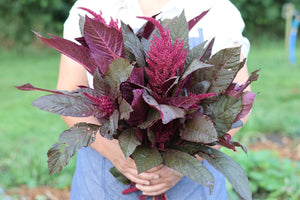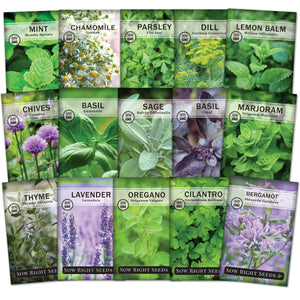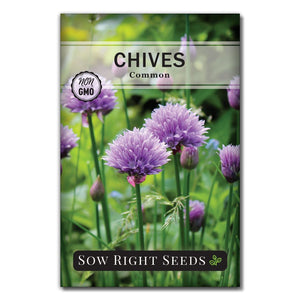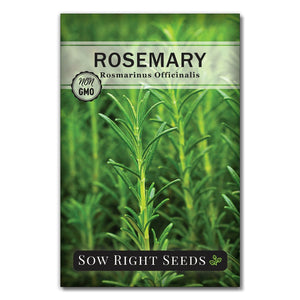How to Grow Roman Chamomile from Seed for a Healthy Lawn and Garden
Herb growing tipsCreating a flourishing garden involves selecting a variety of plants, including herbs, to contribute to the garden's overall health and appeal. Roman Chamomile (Chamaemelum nobile) is a versatile and rewarding herb to cultivate, enhancing your garden with its medicinal benefits, culinary uses, aesthetic value, and ecological contributions. It is revered for its calming effects, ability to aid digestion, and its sweet, apple-like fragrance and flavor.

What is Roman Chamomile?
Roman Chamomile, a captivating low-growing perennial herb, is a graceful addition to the garden with its charming, daisy-like flowers. These petite blossoms, with hues of white and yellow, create a picturesque mat of foliage close to the ground.
The word “chamomile” derives from the Greek for “ground apple” - a reference to the low-growing nature and apple-like fragrance of the Roman version of the plant. Originating from Western Europe and Northern Africa, this resilient herb thrives in USDA hardiness zones 4 to 9 and spreads easily throughout a healthy garden.
Growing Roman Chamomile
Chamomile Seed Starting:
Sow seeds indoors 4 to 6 weeks before the last expected frost, barely covering them, as they require light to germinate. Maintain soil temperature between 65-70°F (18-21°C) and keep the surface moist.

Transplanting Chamomile:
Once the danger of frost has passed, transplant seedlings outdoors, spacing them 8-10 inches apart. Roman Chamomile thrives in partial shade but will produce more flowers in full sun.
Soil and Water:
Plant Roman Chamomile in well-drained soil, and water the plant moderately, keeping the ground moist but not waterlogged. Roman Chamomile can even be grown indoors if given sufficient light.

Chamomile Plant Maintenance:
Roman Chamomile doesn’t require a lot of maintenance in the garden. Water during dry spells, and clip back to encourage bushiness if your plant gets leggy.
To grow as a ground cover, trim the plant for the first time in the late summer. Prune generously to encourage a thick carpet, especially if Roman Chamomile is spreading as a lawn. After the first year, you can maintain it with a mower like a traditional lawn.
Roman chamomile will spread and self-seed. The plant spreads by stems that touch the ground and grow roots. Pruning and cutting flowers before they go to seed can keep the chamomile plants from spreading.
Harvesting Roman Chamomile
Harvesting Roman Chamomile is satisfying. Do it when it's in full bloom to ensure the best potency and aroma. Gently snip the flower heads and leaves, leaving enough foliage for continued growth and blooming. Lay them in a well-ventilated area, away from direct sunlight, to dry thoroughly, which may take up to a week or more.
Using Roman Chamomile
Once harvested, you can enjoy Roman Chamomile in various ways. Brew a soothing herbal tea by infusing a teaspoon of dried chamomile in hot water for 5-10 minutes. Incorporate the aromatic leaves into potpourri blends to infuse your living space with a subtle, pleasant aroma. Or experiment in the kitchen, introducing its delicate, floral taste to salads and dressings.

Roman vs. German Chamomile
Although Roman and German Chamomile have the same name that may be used interchangeably when discussing medicinal properties, they are distinct plants.
Roman Chamomile is a small, perennial plant that spreads out and makes an excellent ground cover and decorative borders, with a sweet fruity apple fragrance and adorable small white daisy-like flowers. Roman Chamomile is very low-maintenance and good for adding lasting beauty to gardens.
German Chamomile is also a lovely plant, but it is taller and has larger white and yellow flowers. It’s also an annual, meaning it only lives for one year. It’s great for adding a splash of beauty to your garden and has a much more showy appearance. German Chamomile also has a stronger, more floral fragrance and flavor.
| Roman Chamomile | German Chamomile |
| Perennial | Annual |
| Spreads low to the ground | Grows up to 24" tall |
| Apple scented | Floral scented |
| Used for essential oil | Popular variety for chamomile tea |
Why You Should Grow Roman Chamomile
Roman Chamomile is an incredibly useful herb and one of the oldest known medicinal herbs. It is often used medicinally for its soothing and tranquilizing effects, which provide gentle anxiety and insomnia relief.
It has a relaxing effect on smooth muscle tissue, which supports its use as a digestive aid that can help relieve discomfort caused by indigestion, bloating, and gas.
Chamomile's anti-inflammatory properties help reduce microbial activity and encourage wound healing, which is why it is such a popular ingredient in many skincare ointments, salves, and balms.
Although it is generally considered a safe herb, it should be avoided by those with asthma, allergies to other members of the aster family (asters, daisies, ragweed, chrysanthemum), and those on blood thinning drugs.
In addition to its health benefits, Roman Chamomile is an interesting culinary herb. It can be used in teas, infused into oils, or as a flavoring agent, adding a sweet and apple-like flavor that’s a delightful addition to jams, candies, ice creams, baked goods, and salad dressing.
In the garden, Roman Chamomile attracts beneficial insects like ladybugs, hoverflies, and parasitic wasps, helping you keep pest activity down. It enhances the growth and flavor of other plants and herbs around it, making it a good companion plant.
Roman Chamomile is super easy to grow and requires minimal maintenance, thriving in poor, compacted soil. Its dainty, daisy-like flowers and feathery foliage make it a beautiful addition to gardens, especially in rock gardens, borders, and pots, and it’s drought-resistant once established! It can even be used as a fragrant, pollinator-friendly ground cover in tricky spots or even as a low-maintenance lawn substitute.

Roman Chamomile FAQs
Is Roman Chamomile a Perennial?
Roman chamomile is a perennial that will come back year after year.
Does Roman Chamomile Spread?
Yes, Roman chamomile does spread, but not aggressively. It grows low to the ground and spreads through creeping stems that root themselves as they grow. Over time, Roman chamomile can form a dense mat, making it a good ground cover.
Can You Grow Chamomile in Containers?
Chamomile can be grown in containers and even indoors with enough light. Choose a pot with good drainage and large enough to accommodate the plant and roots. It will take up as much room as you give it.
Is Roman Chamomile Invasive?
Roman chamomile is not considered invasive. Although it spreads, it won't take over your garden like mint and other plants that spread through rhizomes. Its spreading behavior is relatively easy to control by trimming or dividing the plants as needed.
Roman Chamomile is a joy to grow with its dainty, fragrant blooms and useful qualities. Roman chamomile can be a versatile and rewarding herb to cultivate. It’s well-suited to a variety of gardens and growing conditions and offers multifaceted benefits. Add Roman Chamomile seeds to your gardening list this year.
Written by Teresa Chandler
Found this information helpful? Share it with your gardening friends!









Leave a comment